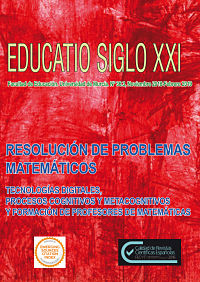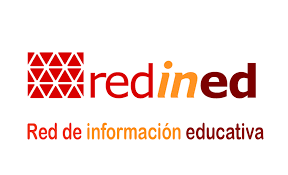Resolución de problemas y regulación del aprendizaje
Resumen
El desarrollo de la resolución de problemas en el aula presenta múltiples facetas, una de las cuales se refiere a la evaluación y particularmente al uso de instrumentos evaluativos que contribuyan a la mejora del aprendizaje y que sirvan al propio resolutor para reflexionar sobre sus producciones y su manera de proceder. En este artículo se muestra como el uso de una base de orientación para la resolución de problemas puede constituir efectivamente una ayuda cuando los alumnos resuelven problemas. En particular se analiza la relación entre el número de acciones de la base de orientación que cada uno de los alumnos ha tomado en consideración al resolver un problema y sus soluciones al problema. La existencia de dicha relación permite considerar la base de orientación como un andamiaje educativo para la resolución de problemas.
Descargas
-
Resumen1865
-
PDF2337
Citas
Blanco, A. (2008). Las rúbricas un instrumento útil en la evaluación de competencias. En Prieto, L., Blanco, A., Morales, P. (Coords.) La enseñanza universitaria centrada en el aprendizaje: estrategias útiles para el profesorado. Barcelona, España: Octaedro Editorial.
Carrillo, J., y Guevara, F. (1996). Un instrumento para evaluar la resolución de proble- mas. UNO Revista de Didáctica de las Matemáticas, 8, 65-81.
Coltman, P., Petyaeva, D., y Anghileri, J. (2002). Scaffolding learning through meaningful tasks and adult interaction. EarlyYears, 22(1), 39–49.
De Corte, E., Verschaffel, L., y Op’tEynde, P. (2000). Self-regulation: A characteristic and a goal of mathematics learning. En M. Boekaerts, P. R. Pintrich y M. Zeidner (Eds.), Handbook of self-regulation (pp. 687–726). San Diego: Academic Press.
De Corte, E., y Verschaffel, L. (2003). El desarrollo de habilidades de autoregulación en la solución de problemas matemáticos. Pensamiento Educativo, 32, 286-305.
Departament d’Ensenyament. Generalitat de Catalunya. (2016). Un currículum compe- tencial per a l’educació primària. Un pas més cap a l’assoliment de les competències bàsiques. Recuperado de http://ateneu.xtec.cat/wikiform/wikiexport/_media/cursos/ curriculum/inf_pri/cape/info_prima_ria_29_6.pdf [enero 2018].
Kirkman, T.W. (1996) Exact r×c Contingency Table: How many rows? columns? Statis- tics to Use. Recuperado de http://www.physics.csbsju.edu/stats/exact_NROW_NCO- LUMN_form.html [enero 2018].
Jorba, J., y Sanmartí, N. (2004). La función pedagógica de la evaluación. En A. Parcerisa,
L. Rovira (Eds.) Evaluación como ayuda al aprendizaje (pp. 21-44). Barcelona, Es- paña: GRAÓ
Lester Jr., F.K., y Cai, J. (2016). Can Mathematica lProblem Solving Be Taught? Prelimi- nary Answers from 30 Years of Research. En P. Felmer, E. Pehkonen, y J.Kilpatrick (Eds.), Posing and solving mathematical problems. Advances and New Perspectives (pp. 117-135).Switzerland: Springer
Lester, F. K., y Kroll, D. L. (1991). Evaluation: A new vision. The Mathematics Teacher, 84(4), 276-284.
Llopis, J. (2013). Test exacto de Fisher. La estadística: una orquestra hecha instrumen- to. Recuperdo de https://estadisticaorquestainstrumento.wordpress.com/2013/01/21/ test-exacto-de-fisher/ [mayo 2017].
Mason, J. (2016a). Part 1 Reaction: ProblemPosing and Solving Today En P. Felmer, E. Pe- hkonen, y J. Kilpatrick, J. (Eds.), Posing and solving mathematical problems. Advances and New Perspectives (pp. 109-113). Switzerland: Springer
Mason, J. (2016b). When Is a Problem…? “When” Is Actually the Problem! En P. Felmer, E. Pehkonen, y J. Kilpatrick, J. (Eds.), Posing and solving mathematical problems. Ad- vances and New Perspectives (pp. 263-285).Switzerland: Springer
Mason, J., Burton, L., y Stacey, K. (1982). Thinking mathematically. Wokingham: Addi- son-Wesley.
Niss, M., y Højgaard, T. (Eds.) (2011). Competencies and Mathematical Learning. Ideas and inspiration for the development of mathematics teaching and learning in Den- mark, IMFUFA tekst 485/2011. Roskilde, Denmark: Department of Science, Systems and Models, Roskilde University.
Panaoura, A. (2016). Self-Regulatory Strategies During Problem-Solving by Using an In- quiry-Based Approach: “Make Sense of Problems and Persevere in Solving Them” . In
K. Newton (Ed.), Problem- Solving: strategies, challenges andoutcomes (pp. 197-210). Nova science publishers
Páramo, P., y Hederich. C. (2014). Educación basada en la evidencia. Revista Colombia- na de Educación, 66, 13-16.
Pólya, G. (1945). How to solve it. Princeton: Princeton University Press.
Ponte, J. P. (2007). Investigations and explorations in the mathematics classroom. ZDM Mathematics Education, 39, 419-430.
Rosli, R.,Goldsby, D.yCapraro, M.M. (2013). Assessing Students’ Mathematical Problem- Solvingand Problem-Posing Skills. Asian Social Science, 9(16),54–60.
Sanmartí, N., y Jorba, J. (1995). Autorregulación de los procesos de aprendizaje y cons- trucción de conocimientos. ALAMBIQUE Didáctica de las Ciencias Experimentales, 4, 59-77.
Sanmartí, N. (2007). Evaluar para aprender. 10 ideas clave. Barcelona, España: Graó.
Sanmartí, N. (2010). Avaluar per aprendre. L’avaluació per millorar els aprenentatges de l’alumnat en el marc del currículum per competències. Recuperado de http://xtec. gencat.cat/web/.content/alfresco/d/d/workspace/SpacesStore/0024/fc53024f-626e- 423b-877a-932148c56075/avaluar_per_aprendre.pdf [enero 2018].
Schoenfeld, A. H. (1992). Learning to think mathematically: Problem solving, metacogni- tion, and sense-making in mathematics. En D. Grouws (Ed.), Handbook for Research on Mathematics Teaching and Learning (334-370). New York: MacMillan.
Schoenfeld, A. H. (2013). Reflections on problem solving: theory and practice. The Mathematics Enthusiast, 10(1y2), 9−34.
Smit, R., Bachmann, P., Blum, V., Birri, T., y Hess, K. (2017). Effects of a rubric for mathe- matical reasoning on teaching and learning in primary school. Instructional Science, 45, 603–622.
Stacey, K. (2016). Reaction: Teachers, ProblemPosing and Problem-Solving En P. Felmer,
E. Pehkonen, y J. Kilpatrick, J. (Eds.), Posing and solving mathematical problems. Ad- vances and New Perspectives (pp. 387-391). Switzerland: Springer
Van de Pol, J., Volman, M., y Beishuizen, J. (2010). Scaffolding in teacher–student inte- raction: A decade of research. Educational Psychology Review, 22(3), 271–296.
Villalonga Pons, J. (2017). La competencia matemática. Caracterización de actividades de aprendizaje y de evaluación en la resolución de problemas en la enseñanza obli- gatória. Tesis doctoral. Universitat Autònoma de Barcelona.
Villalonga Pons, J.,y Andrews, P. (2017). Self-scaffolding students’ problem solving: Testing an orientation basis. En T. Dooley y G. Gueudet (Eds.), Proceedings of theTenth Congress of the European Society for Research in Mathematics Education. Dublin, Ireland: DCU Institute of Education and ERME.
Villalonga Pons, J. y Andrews, P. (2018). Supporting students’ mathematical problem solving: The key role of different forms of checking as part of a self-scaffolding mecha- nism. En E. Norén, H. Palmér y A. Cooke, Nordic Research in Mathematics Education: Papers of NORMA 17. The Eighth Nordic Conference on Mathematics Education Stockholm, May 30 - June 2, 2017 (pp. 79-88). Estocolmo.
Villalonga Pons, J. y Deulofeu, J. (2015). La base de orientación, una herramienta para ayudar al alumnado a resolver problemas. En FESPM y SEMRM (Eds.) Actas JAEM 2015: 17 Jornadas para el Aprendizaje y la Enseñanza de las Matemáticas (p. 36, 16 páginas). Cartagena, España.
Villalonga Pons, J.,y Deulofeu, J. (2017a). Representar problemas usando una base de orientación. UNO. Revista de Didáctica de las Matemáticas, 75, 59–65.
Villalonga Pons, J., y Deulofeu, J. (2017b). La Base de Orientación en la Resolución de Problemas: “cuando me Bloqueo o me Equivoco”. Journal of Research in Mathema- tics Education, REDIMAT, 6(3), 256–282.
Wood, D., Bruner, J., y Ross, S. (1976). The role of tutoring in problem solving. Journal of Child Psychology and Psychiatry, 17, 89–100.
Zimmerman, B. J. (1995). Self-Regulation Involves More Than Metacognition: A Social Cognitive Perspective. Educational Psychologist,30(4), 217–221.
Las obras que se publican en esta revista están sujetas a los siguientes términos:
1. El Servicio de Publicaciones de la Universidad de Murcia (la editorial) conserva los derechos patrimoniales (copyright) de las obras publicadas, y favorece y permite la reutilización de las mismas bajo la licencia de uso indicada en el punto 2.
2. Las obras se publican en la edición electrónica de la revista bajo una licencia Creative Commons Reconocimiento-NoComercial-SinObraDerivada 4.0 Internacional (texto legal). Se pueden copiar, usar, difundir, transmitir y exponer públicamente, siempre que: i) se cite la autoría y la fuente original de su publicación (revista, editorial y URL de la obra); ii) no se usen para fines comerciales; iii) se mencione la existencia y especificaciones de esta licencia de uso.
3. Condiciones de auto-archivo. Se permite y se anima a los autores a difundir electrónicamente las versiones pre-print (versión antes de ser evaluada) y/o post-print (versión evaluada y aceptada para su publicación) de sus obras antes de su publicación, ya que favorece su circulación y difusión más temprana y con ello un posible aumento en su citación y alcance entre la comunidad académica. Color RoMEO: verde.











